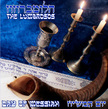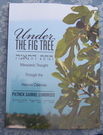All were baptized into Moses in the cloud and in the sea.
The Children of Israel could have left Egypt, traveled directly northeastward and be in Canaan in less than a few weeks. Instead, Hashem had them make a small detour crossing the Red Sea by the Gulf of Aqaba. Were the reasons given for this detour (Exodus 13:17-18) the only real purposes?
The Israelites had just spent several generations in Egypt. They needed to be cleansed from idolatry and Egyptian culture. They needed to be reborn into Hashem’s people, and into the culture of the Kingdom of Hashem. This is where the idea of ‘born-again’ came from: from two tractates written by Jewish sages that say that total immersion into water (baptism) is like being born again. We go into a water and stop breathing which is like being in a grave where we do not have breath anymore, and we come out resurrected a new person. The sages mention the ‘born-again’ idea mostly in regards to converts to Judaism (Yevamot 47b and 48b). They immerse in order to emerge a born-again new creature in God. This is what God had in mind in this nation-wide immersion through the Red-Sea (1 Corinthians 10:2).
When Yeshua told Nicodemus that he needed to be reborn, the modern-day ‘born-again’ Christian movement did not exist, so Yeshua was using the term according to its Talmudic value, and this is why Nicodemus answered the Master accordingly. What Nicodemus said in essence was “Why do I need to convert when I am already Jewish?” To which Yeshua basically answered, "Truly, truly, I say to you, unless one is born of water and the Spirit, he cannot enter the kingdom of God. That which is born of the flesh is flesh, and that which is born of the Spirit is spirit” (John 3:5-6). In other words, the Master reiterated John the Immerser’s message that biological descent into God’s family was not enough, but repentance into a new creature for Hashem was also needed (Matthew 3:9). The Israelites crossing the Red Sea were already Israelites, but they needed to also be baptized into Moses in the cloud and in the sea (1 Corinthians 10:2).
Yeshua continued answering Nicodemus with, “The wind blows where it wishes, and you hear its sound, but you do not know where it comes from or where it goes. So it is with everyone who is born of the Spirit." (John 3:8). Just like the wind cannot be seen and is only perceived though its effects, so we are. The virtues of the new life that we now live, its positive influences on others, and its reflection of Hashem, are the only testimony given to others of our rebirth.
As we claim to have been reborn, as we claim to have been immersed unto Yeshua, let the effects of our rebirth be felt by others. May we live and walk in the newness of life that He has given us to be God’s children, and as the healing reflection of His spirit on our poor world.
 RSS Feed
RSS Feed


